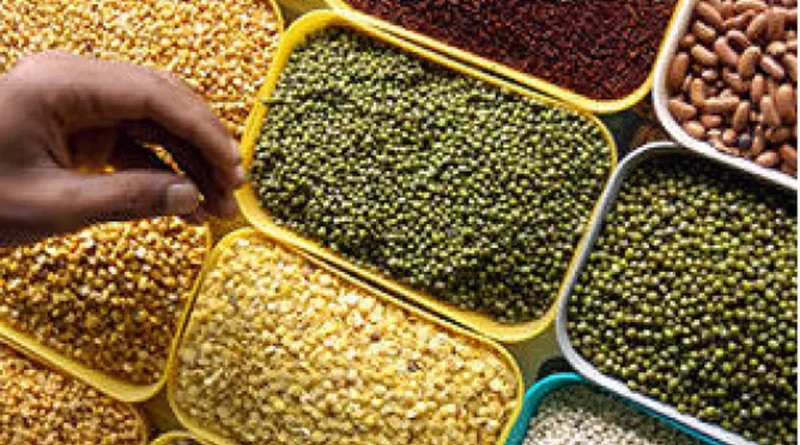Govt to purchase pulses at market rates to ramp up stocks
By Sandip Das
The government is likely to use the price stabilsation fund (PSF) for purchasing pulses from farmers at market prices. The need for such purchases has come as procurement at minimum support prices has become difficult given the elevated market rates, while stocks are depleting and could fall below buffer levels in many cases.
Sources said te government agencies engaged in procurement operations — NAFED and NCCF – would dip into the PSF to buy pulses varieties, especially chana.
“As chana prices are ruling above minimum support price (MSP) of Rs 5650/quintal, purchase under PSF is being considered,” an official said.
The PSF set up in FY15 under the department of consumer affairs is aimed at protecting consumers from extreme volatility in prices of agri-horticultural commodities by maintaining a strategic buffer stock of pulses and onions. The government agencies buy commodities from farmers at market price. The Budget FY26 has made an outlay of Rs 4,020 crore for PSF. The fund is typically used to curb price swings in pulses like tur, urad, moong, masur, and gram, besides staple vegetables like onions, potatoes, and tomatoes.
The stocks created using PSF are released in the market in a calibrated manner to discourage hoarding, unscrupulous speculation; and for supplies to consumers at affordable prices.
Under the PSS of the agriculture ministry, the procurement of pulses, oilseeds & copra at MSP is undertaken to provide remunerative prices to farmers. The mandate is to buy 25% of the country’s production under PSS.
Against the buffer norm of one million tonne (MT) for chana, current stocks of only 31,000 tonn because of sharp fall in procurement since 2023-24 as prices were ruling significantly above the MSP which discourages the farmers to sell to agencies at MSP.
Sources said against the buffer norm of 3.5 MT, which the government needs to carry out a market intervention programme for curbing the possibility of rise in prices, the agencies – farmers’ Nafed and National Cooperative Consumers Federation – currently hold 1.72 MT of pulses.
Out of which a major chunk of stock is moong (0.70 MT), masur (0.59 MT) and tur (0.39 MT). Some of the masur stocks were created through imports.
In the current season (2024-25), against an approval of 2.76 MT of chana purchase, agencies so far have procured only 21,504 tonne of pulse variety as mandi prices are ruling above the MSP. Overall pulses procurement – tur, moong, urad, masur and chana by Nafed and NCCF under PSS so far has been 0.74 MT including 0.39 MT of tur.
The pulses purchased under PSS dropped to 0.69 MT in 2023-24 from 2.83 MT and 3.03 MT in 2022-23 and 2021-22 respectively because of lower output pushing up prices above MSP.
The agriculture ministry is aiming to boost pulse production to 29.9 MT in the 2024-25 crop years (July-June), an increase of over 23% from 2023-24 crop year.
In 2019, the policy of maintaining a buffer stock of pulses was created aimed at controlling prices through market intervention programmme. The buffer stocks for pulses were created mostly through domestic procurement via PSS but also through imports using PSF.
This article has been republished from The Financial Express.

